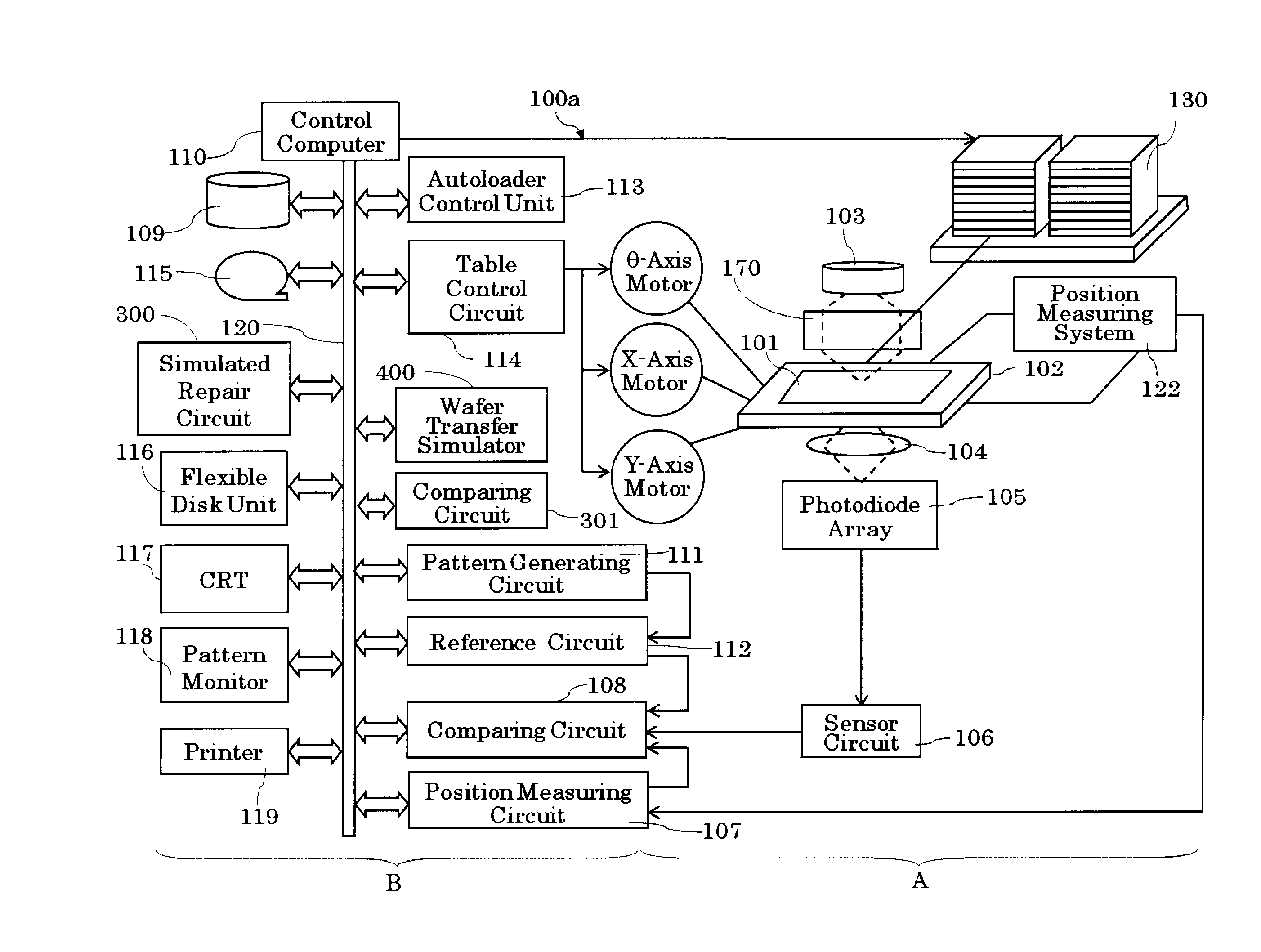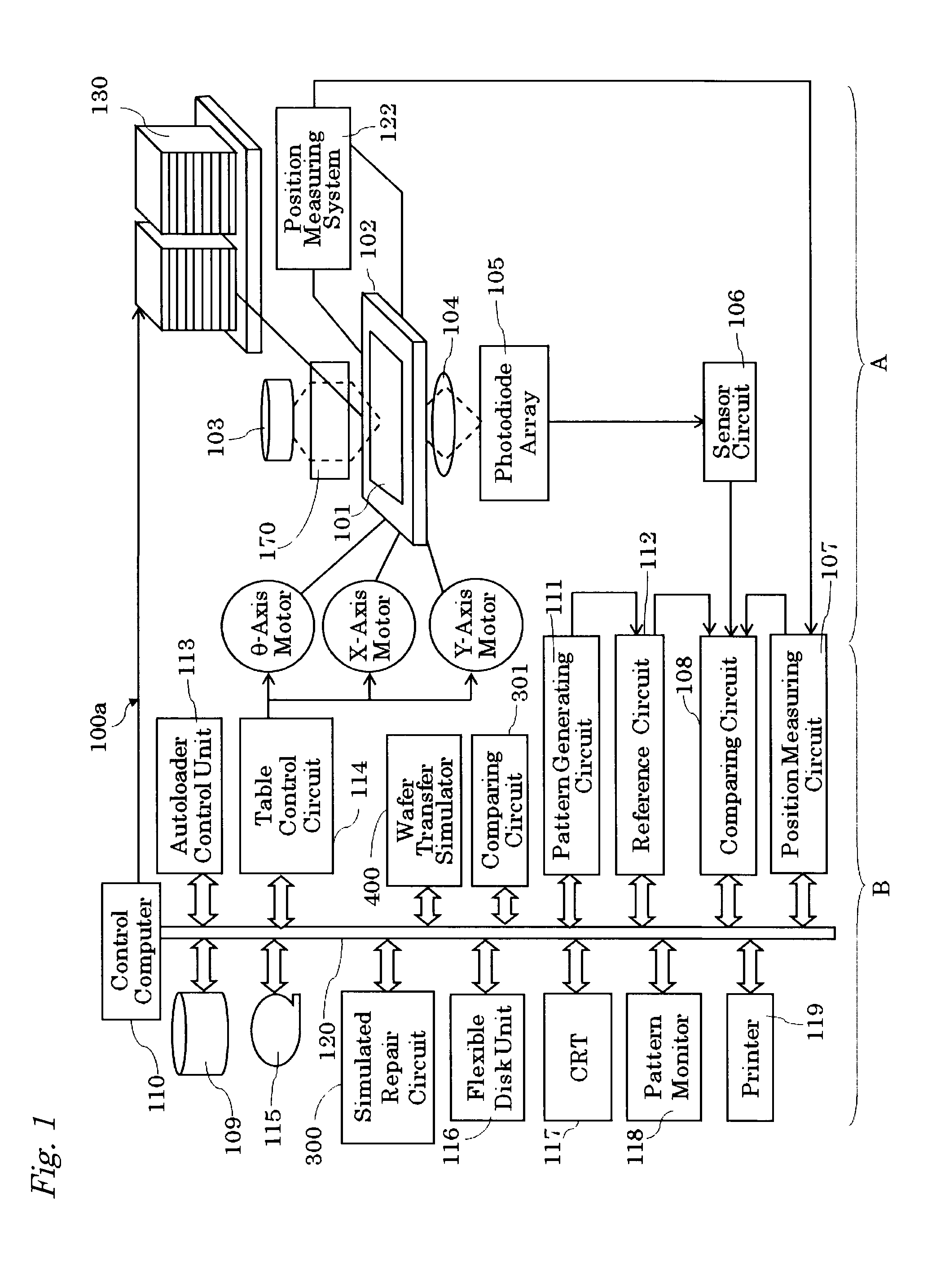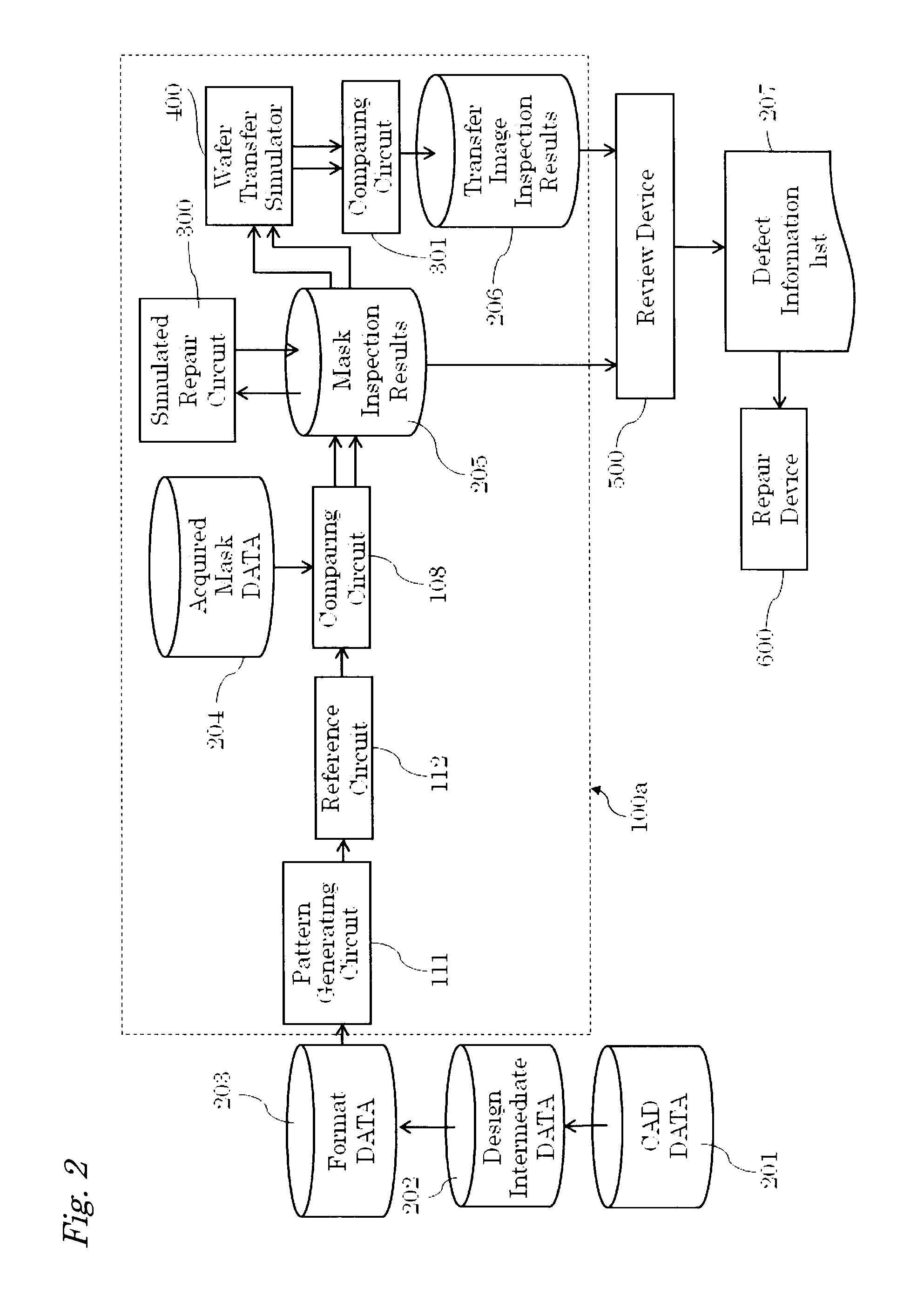Defect estimation device and method and inspection system and method
a technology of defect estimation and inspection system, applied in the direction of instruments, photomechanical equipment, image enhancement, etc., can solve the problems of difficult to distinguish a difference between a shape defect of a pattern and a potentially existing shape error of a pattern, and the position error of an extremely small pattern is required to be inspected
- Summary
- Abstract
- Description
- Claims
- Application Information
AI Technical Summary
Benefits of technology
Problems solved by technology
Method used
Image
Examples
embodiment 1
[0071]FIG. 1 is a diagram showing the configuration of an inspection system according to an Embodiment of the present invention. The inspection system of the present Embodiment will be described in connection with the inspection of masks used in photolithography.
[0072]As shown in FIG. 1, the inspection system 100a includes an optical image capture unit A and a control unit B.
[0073]The optical image capture unit A includes an irradiating laser beam light source 103, an XYθ table 102 movable in the horizontal X and Y directions and rotatable in a horizontal plane (or in a θ direction), an optical illumination system 170 serving as a transmission illumination system, an enlarging optical system 104, a photodiode array 105, a sensor circuit 106, a position measuring system 122, and an autoloader 130.
[0074]In the control unit B, a control computer 110 which controls the entire inspection system 100a is connected through a bus 120 (serving as a data transmission path) to a position measur...
embodiment 2
[0140]FIG. 5a is an example of the mask shape defect. In this example, there is a fracture of an assist pattern 1002 in a region 1003. The assist pattern 1002 is a pattern, which is auxiliary provided in a mask for the purpose of improving the patterning characteristics of a main pattern 1001. The assist pattern 1002 itself is not transferred onto a wafer. When a wafer transfer image on the mask of FIG. 5a is estimated by simulation, the wafer transfer image shown in FIG. 5b is obtained. That is to say, in the wafer transfer image, the line width at the defect portion is smaller than the line width of a pattern at a normal portion. When the degree of reduction in the line width is more than a specified value, a region 1004 is determined as the defect portion to be repaired. The degree of reduction in the line width may be specified by a difference of an estimated line width between the normal portion and the defect portion or may be specified by the ratio of the estimated line width...
PUM
| Property | Measurement | Unit |
|---|---|---|
| length | aaaaa | aaaaa |
| defect | aaaaa | aaaaa |
| optical image | aaaaa | aaaaa |
Abstract
Description
Claims
Application Information
 Login to View More
Login to View More - R&D
- Intellectual Property
- Life Sciences
- Materials
- Tech Scout
- Unparalleled Data Quality
- Higher Quality Content
- 60% Fewer Hallucinations
Browse by: Latest US Patents, China's latest patents, Technical Efficacy Thesaurus, Application Domain, Technology Topic, Popular Technical Reports.
© 2025 PatSnap. All rights reserved.Legal|Privacy policy|Modern Slavery Act Transparency Statement|Sitemap|About US| Contact US: help@patsnap.com



